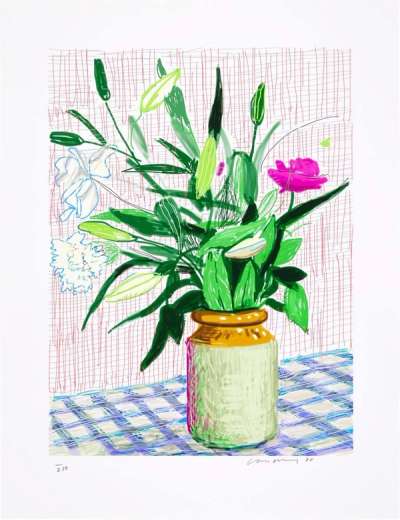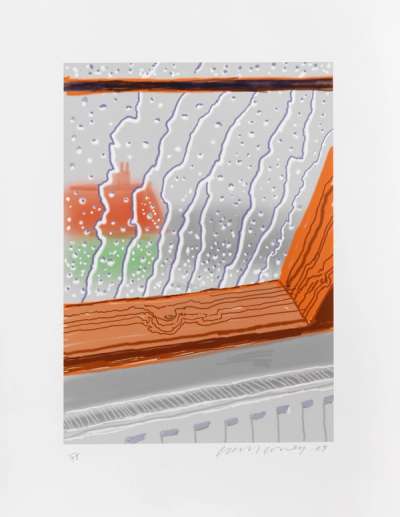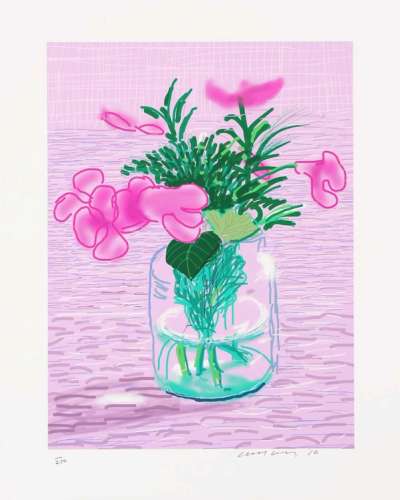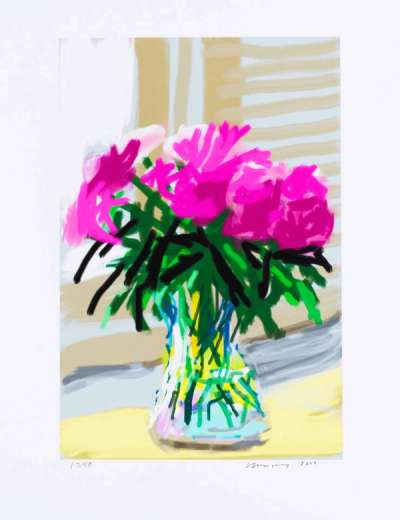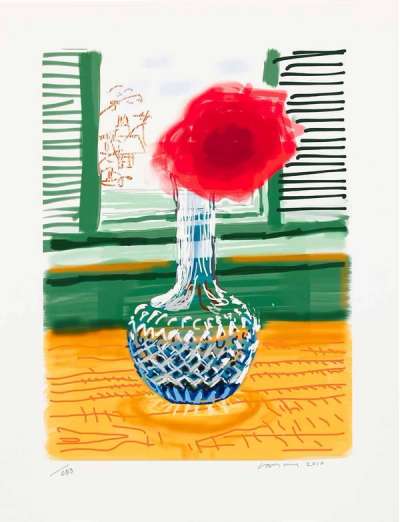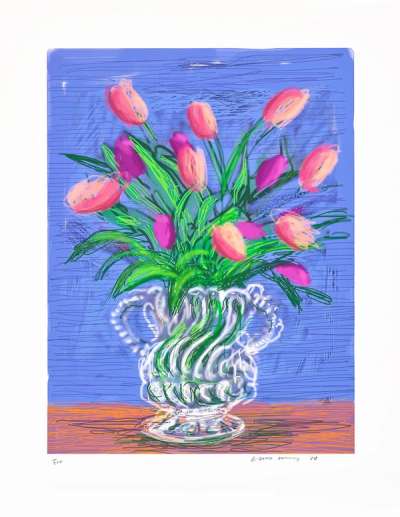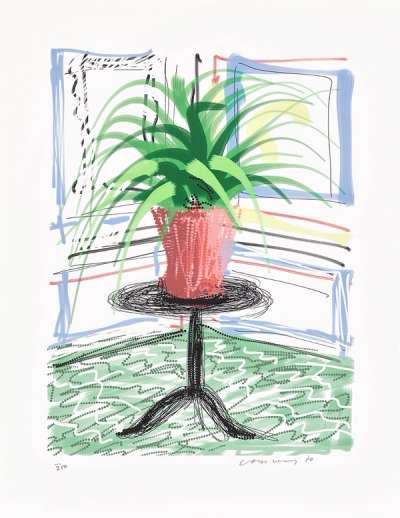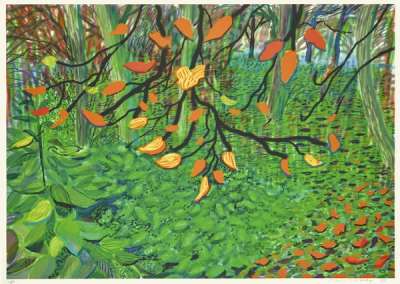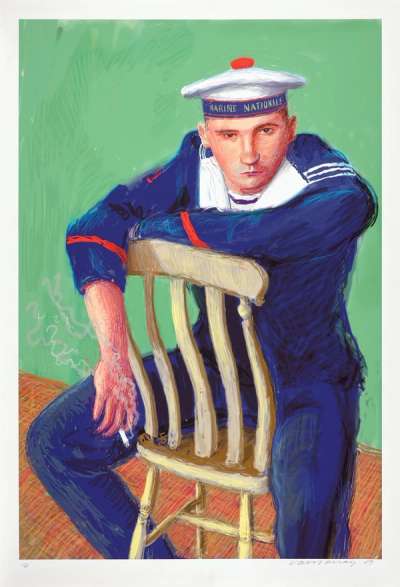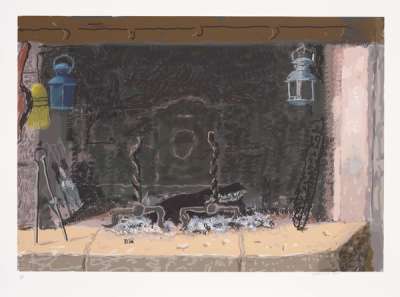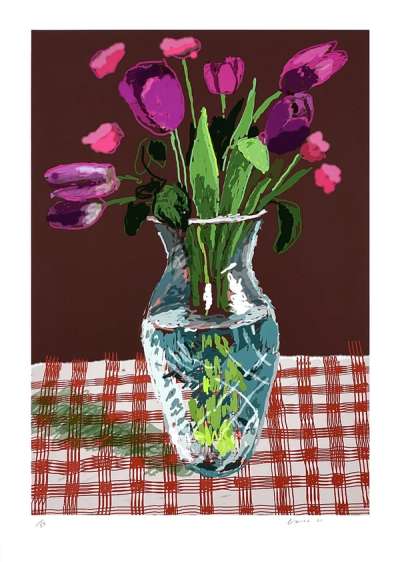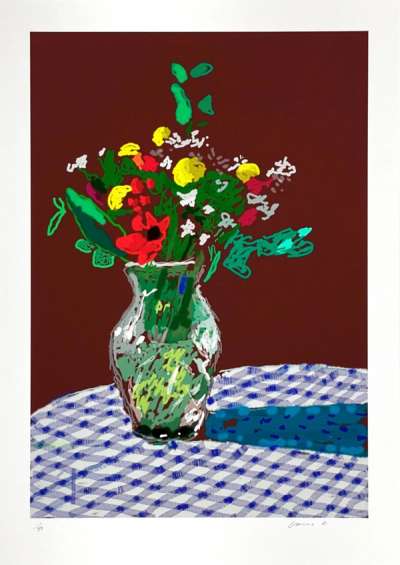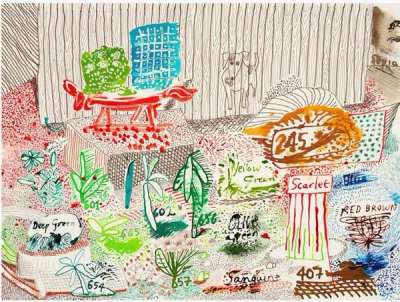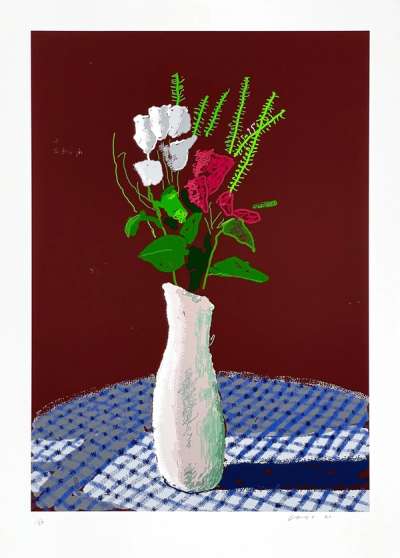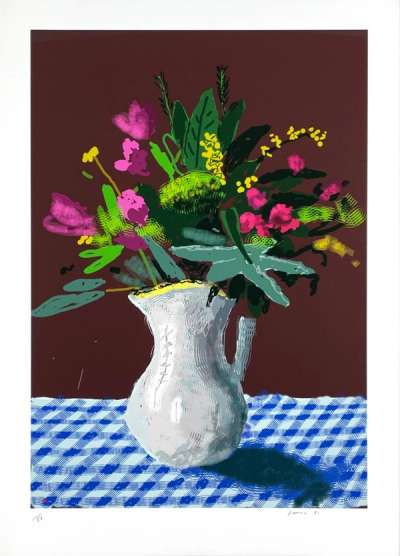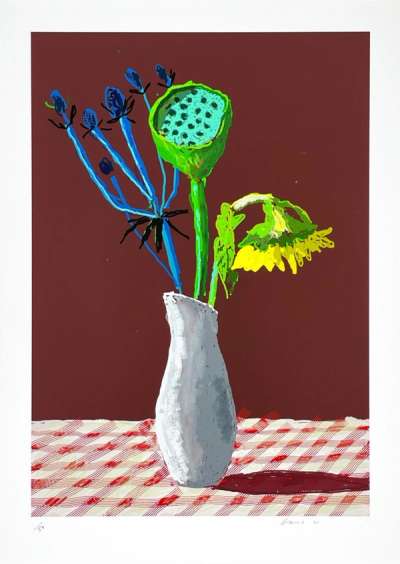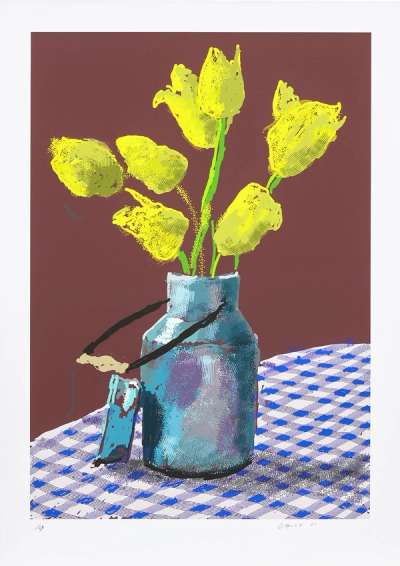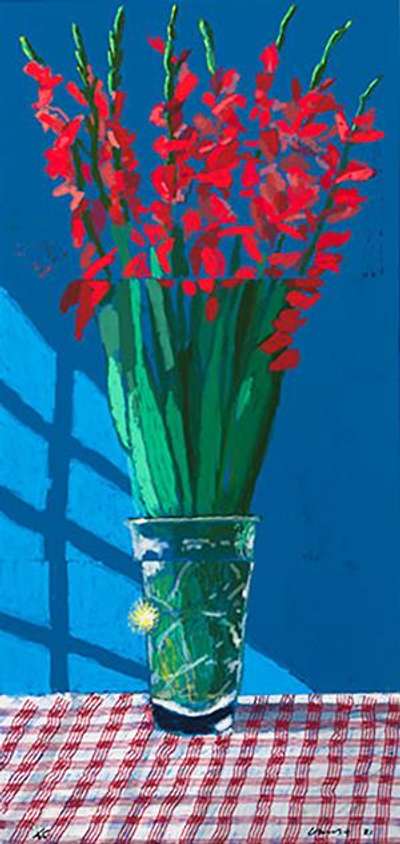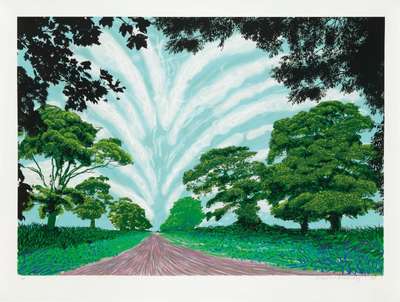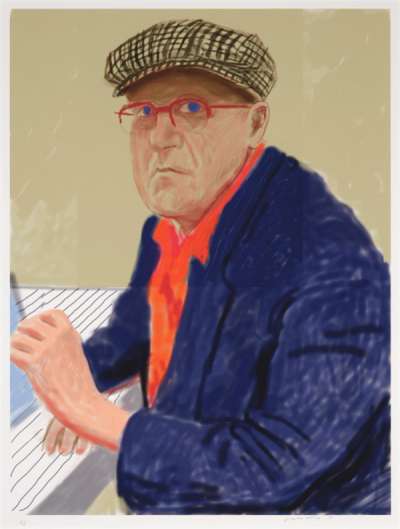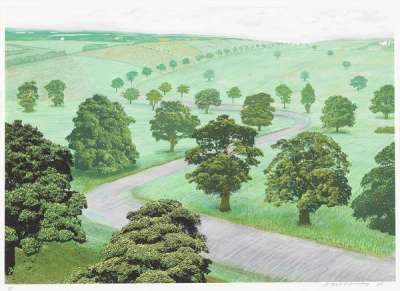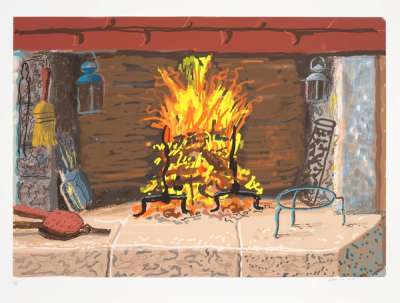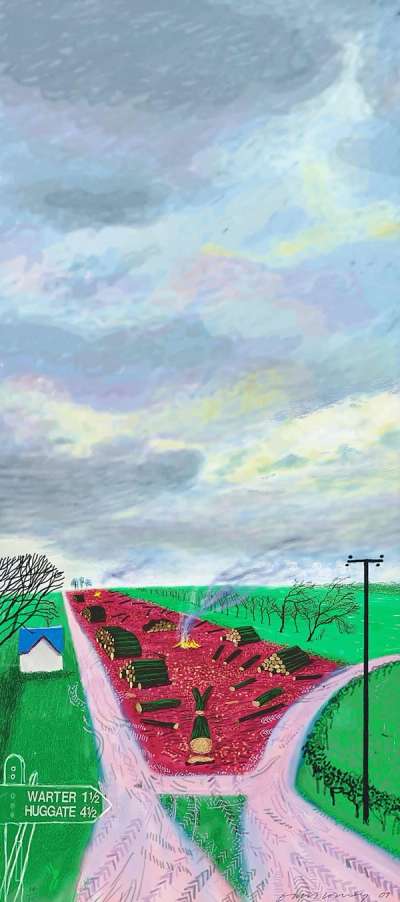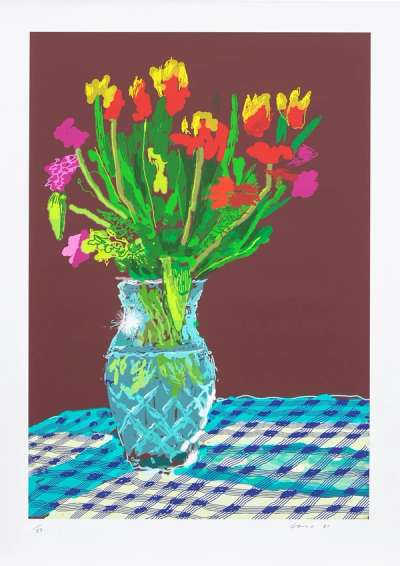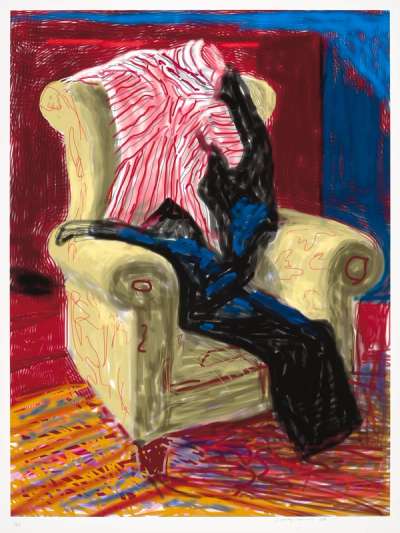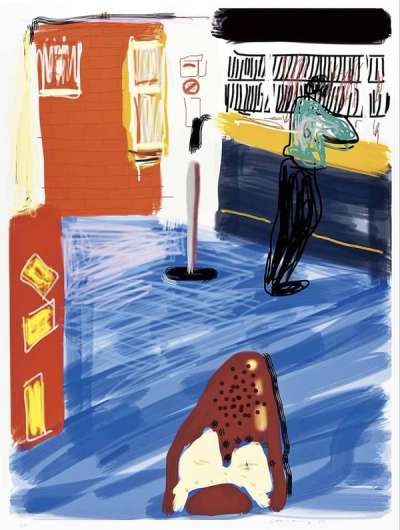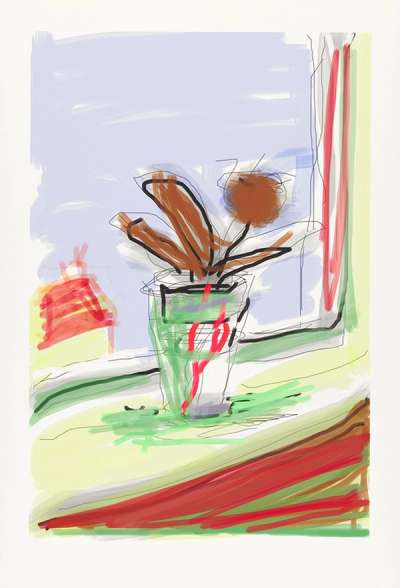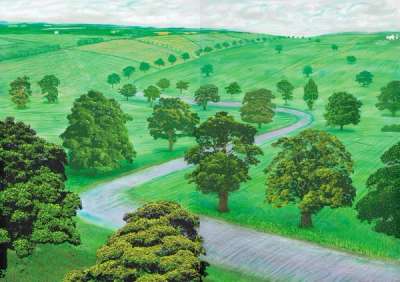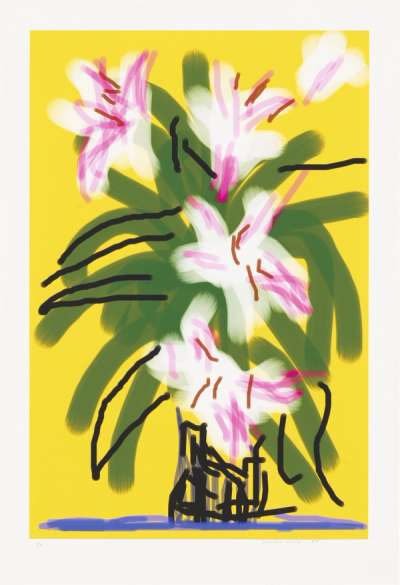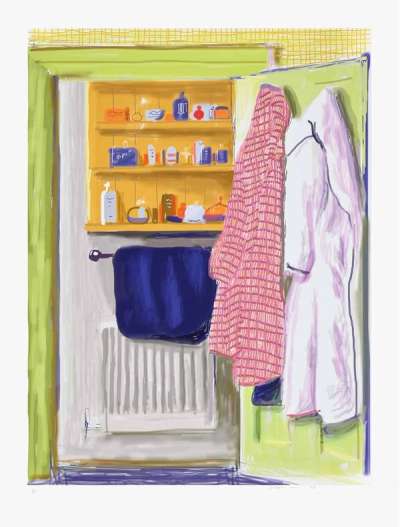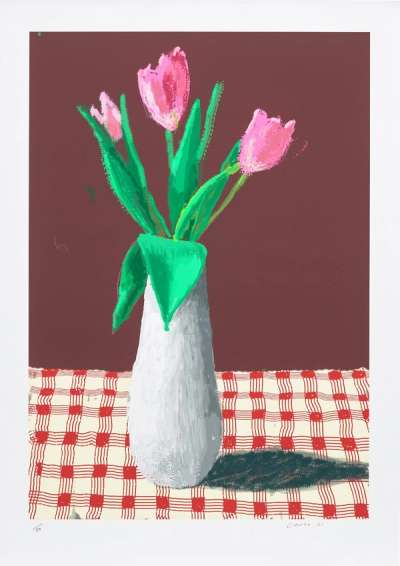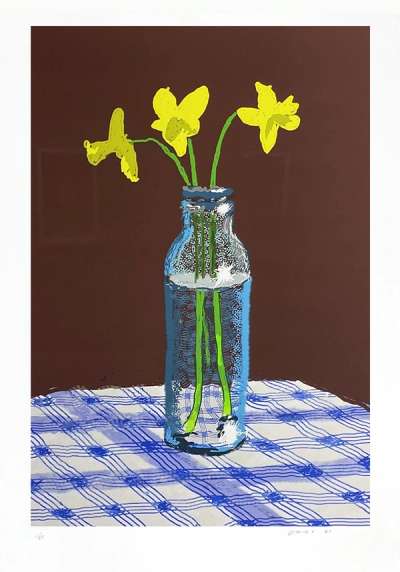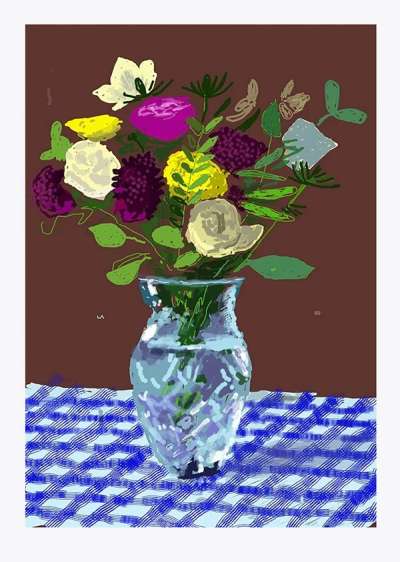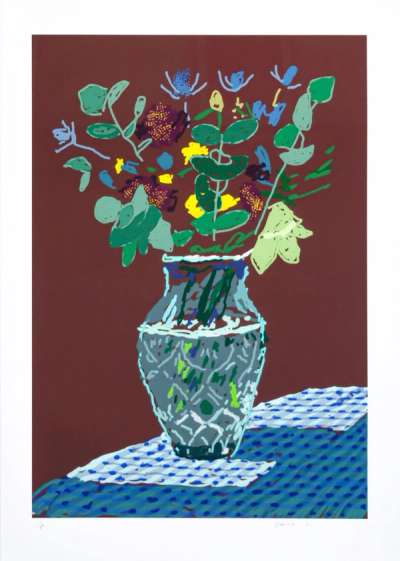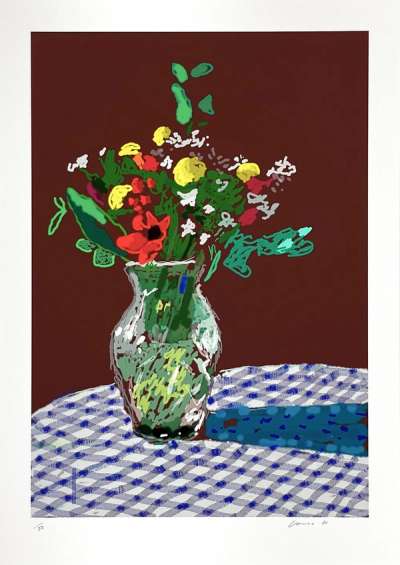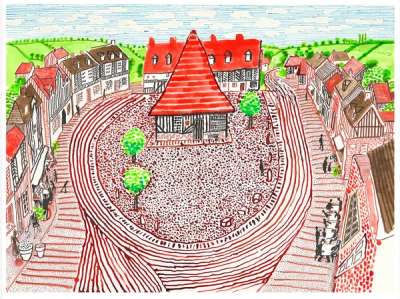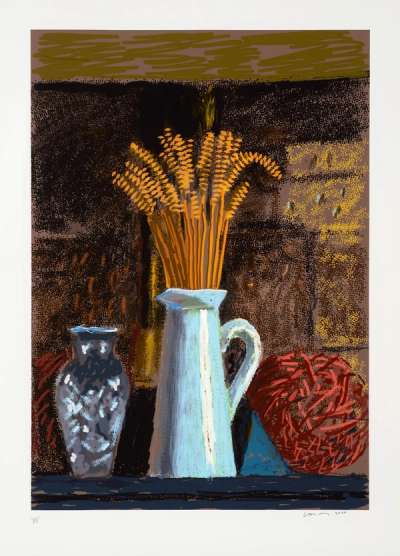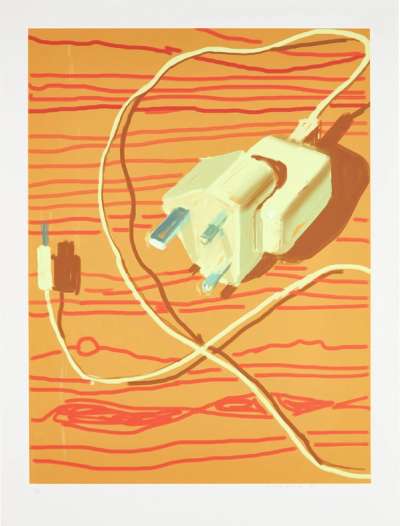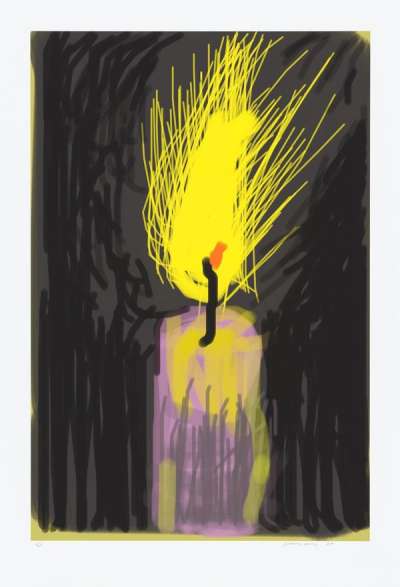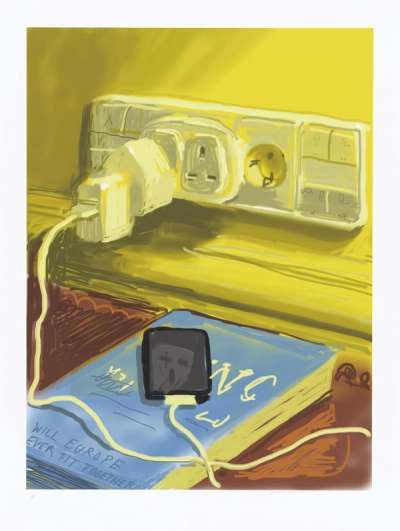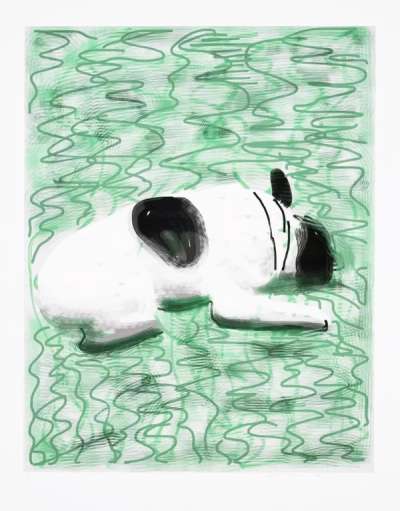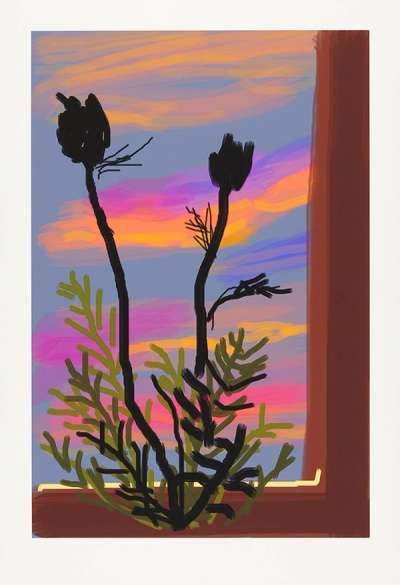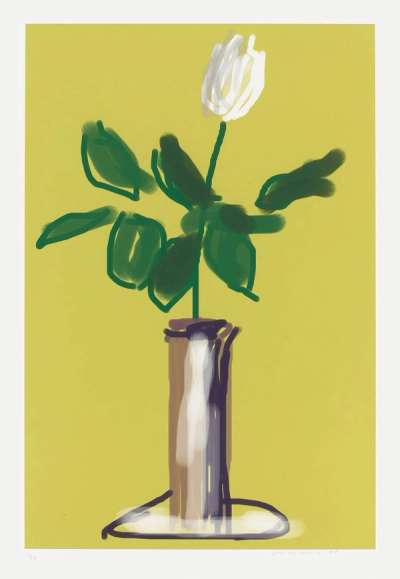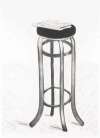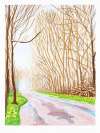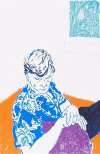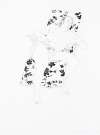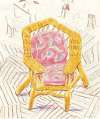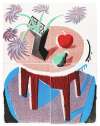iPad
Drawings
In 2010 Apple released the first iPad and David Hockney’s printmaking technique was once again transformed. The digital drawings in this series include charming studies of flowers and interiors that definitive marking a new chapter in Hockney’s style, yet are unmistakably of his hand.
David Hockney iPad Drawings For sale
iPad Drawings Value (5 Years)
Works from the Digital Drawings series by David Hockney have a strong market value presence, with 257 auction appearances. Top performing works have achieved standout auction results, with peak hammer prices of £337500. Over the past 12 months, average values across the series have ranged from £15840 to £337500. The series shows an average annual growth rate of 5.46%.
iPad Drawings Market value
Auction Results
| Artwork | Auction Date | Auction House | Return to Seller | Hammer Price | Buyer Paid |
|---|---|---|---|---|---|
 Untitled No. 778 David Hockney Signed Print | 26 Nov 2025 | K Auctions | £19,550 | £23,000 | £27,000 |
 Less Trees Near Warter David Hockney Signed Print | 24 Nov 2025 | Seoul Auction | £212,500 | £250,000 | £290,000 |
 Untitled No. 535 David Hockney Signed Print | 23 Oct 2025 | Sotheby's New York | £22,100 | £26,000 | £35,000 |
 Untitled No. 329 David Hockney Signed Print | 23 Oct 2025 | Sotheby's New York | £18,700 | £22,000 | £30,000 |
 Untitled No. 346 David Hockney Signed Print | 24 Sept 2025 | Sotheby's London | £29,750 | £35,000 | £50,000 |
 A Bigger Fire David Hockney Signed Print | 18 Sept 2025 | Phillips London | £34,000 | £40,000 | £60,000 |
 Untitled No. 468 David Hockney Signed Print | 18 Sept 2025 | Phillips London | £17,000 | £20,000 | £28,000 |
 Untitled No. 516 David Hockney Signed Print | 18 Sept 2025 | Phillips London | £29,750 | £35,000 | £50,000 |
Sell Your Art
with Us
with Us
Join Our Network of Collectors. Buy, Sell and Track Demand
Meaning & Analysis
Exclaiming in 1980 that “I love new mediums,” Hockney’s iPad Drawings series is a perfect example of the artist’s keenness to experiment. Throughout his career he experimented with numerous printing techniques, from etching and aquatint to screen printing and lithography. In 2010 Apple released the first iPad and Hockney’s printmaking technique was once again transformed. His daily drawing practice was given new life as he swapped sketchbook for screen and found that his bold and colourful compositions could be conjured up anywhere, from Yosemite to Yorkshire, from his garden to his living room.
The digital drawings in this collection include charming studies of flowers and interiors that while definitively marking a new chapter in Hockney’s style are unmistakably part of his oeuvre. Here we see his eye for colour and composition, his innovative use of line and tone, as well as his ubiquitous charm and ingenious eye, in full bloom.
Using the Brushes app, Hockney moves between the thin sketchy lines of his etchings to washes of colour we recognise from his lithography to achieve a bold contrast between petal and stalk, flower and vessel. Perhaps one of the most effective of his digital drawings sees Hockney painting the rain on his studio window, creating a touching scene that is at once filled with realism and yet resolutely digital. Mixing patterns and textures, line and brush, Hockney gives the prints an energy that takes them beyond the flatness of their digital medium.
Hockney had embraced the digital before, when he began working with an office photocopier in 1986 for his series Home Made Prints. As with this earlier series the iPad offered a new autonomy to Hockney. While he enjoyed working with collaborators such as Kenneth Tyler and Maurice Payne who would prepare etching plates for him, he relished the chance to work alone and with complete spontaneity, unfettered by the challenges of a traditional medium. This new freedom also meant that Hockney could produce one drawing and then print it digitally in large editions, making some of his most recent works also some of his most affordable.
This collection also demonstrates Hockney’s long running love of depicting flowers which can be considered as important a subject in his oeuvre as portraits, or swimming pools. Here he shows his eye for reproducing the natural world in all its vibrance and variance, through free and yet detailed studies of lilies, tulips and roses.
